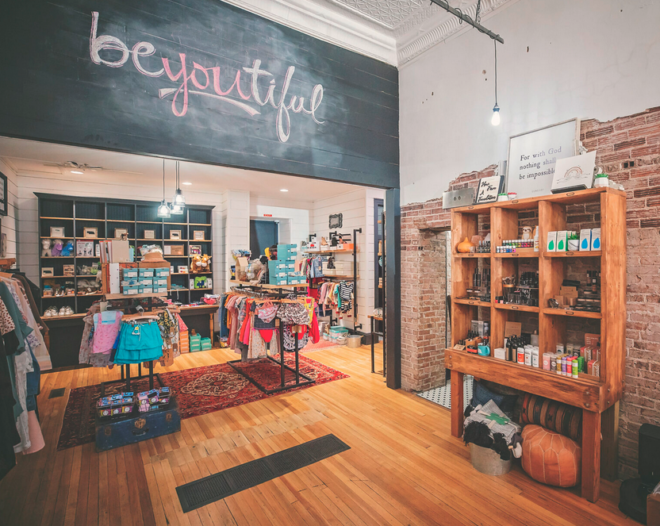How to write a boutique business plan
Editorial Team
4 min read
There’s a lot to consider when you’re opening a clothing store. A boutique business plan doesn’t just help you stay organized, it’s an essential tool to share with potential investors and other collaborators.
Here’s a simple guide on how to write a boutique business plan that can clearly communicate your goals.
How to write a boutique business plan
A clothing boutique business plan should include a number of standard components. Each one will help you clarify your vision and strategize for the future.
Start thinking about the technology you’ll need, including a retail POS system that combines in-person operations with eCommerce, and streamlines the process for managing inventory, invoices, and employees.
1. Executive summary
An executive summary should read like an elevator pitch for your boutique business plan. How would you succinctly sum up the concept for your boutique and how you aim to serve your target customer? What are you going to offer that stands out in the marketplace?
Though your boutique business plan should begin with an executive summary, it may be best to write it after you’ve drawn up the rest of the plan. You’ll also want to include a basic rundown of how the business will work financially.
2. Company description and overview
Tell a story about the boutique you want to open. Who are your ideal customers, and what kind of experience will you give them? What will they get at your boutique that they won’t get anywhere else? This is where you identify your brand and describe what’s unique about it.
Honing your mission statement as a brand will also help shape future decisions. Be clear about how you envision your business, so you can return to it as a blueprint.
3. Products and pricing
Be specific about what your boutique will sell. What type of clothing and accessories will you carry, and at what price point? Will you offer everyday basics in addition to more specialized garments?
Spell out your plan for suppliers, including how much you’ll pay compared to what you’ll charge. Also specify any additional services (like tailoring) and how you might plan to expand offerings in the future.
To maximize efficiency and flexibility for customers, you’ll need a POS system that accepts all payment types.
READ: 6 useful apps for boutique owners and small retail businesses
4. Market analysis
You can break your market analysis into three parts.
- Identify competition. What other businesses will you be competing with? Identify your direct competition, including other local boutiques, as well as broader industry competitors, like large department stores and other online retailers. How will you differentiate your boutique?
- Assess the industry. Take a look at the industry overall, and how you’ll carve out a place in it. What is the state of the marketplace? How will you meet existing demands and manage potential changes in the future?
- SWOT. SWOT stands for strengths, weaknesses, opportunities, and threats. Consider each one carefully to be clear about where your business stands.
5. Marketing strategy
How will you attract your ideal customers? Lay out your plan for drawing in the people you want to serve, and where you’ll find them. Social media will likely be a key component here, both for in-person shopping and especially online.
6. Business operations
This is the nuts-and-bolts section for everyday operations. What are your store hours? What sort of staffing do you plan to have? Think about how a typical day will run and the moving parts involved.
A smart POS system can help make simple work of operations, including tracking best sellers, syncing inventory, and paying staff on time.
7. Financial plan
Financial viability is one of the most important considerations for your boutique business plan, and this is where you do the math. Consult expert sources and other business owners to assess what your operating costs will be, and how you plan to turn a profit. Since this is also where you’ll prove your determination to any investors, make sure this section is top notch.
8. Future outlook
Think about a 5-year plan for your business. Do you foresee offering additional products or services down the line? Opening additional locations? Tell a story here about how you’d like to see your business thrive in the future.
Writing a boutique business plan is an essential step to launching your business. Find out how Clover can help streamline operations and provide support tailored to your needs with a boutique POS system.
Talk to a Clover Business Consultant to learn more today.
CONTACT SALESRelated Posts
Full Service Restaurants (FSR)
Finding the best suppliers for your restaurant: A simple guide
The power of connected retail: 5 ways Clover merchants are saving time with inventory management
Popular Topics
Stay In Touch
Sign up and learn more about Clover.
Thank you for your subscription!
Recent Stories
- Jewelry store supplies and equipment needed for opening day
- How small businesses can use employee discounts to retain staff
- Tips and tricks for opening an outdoor pop-up restaurant
Please share your contact information
to access our premium content.
Thank you for sharing your contact information.
Download Now





